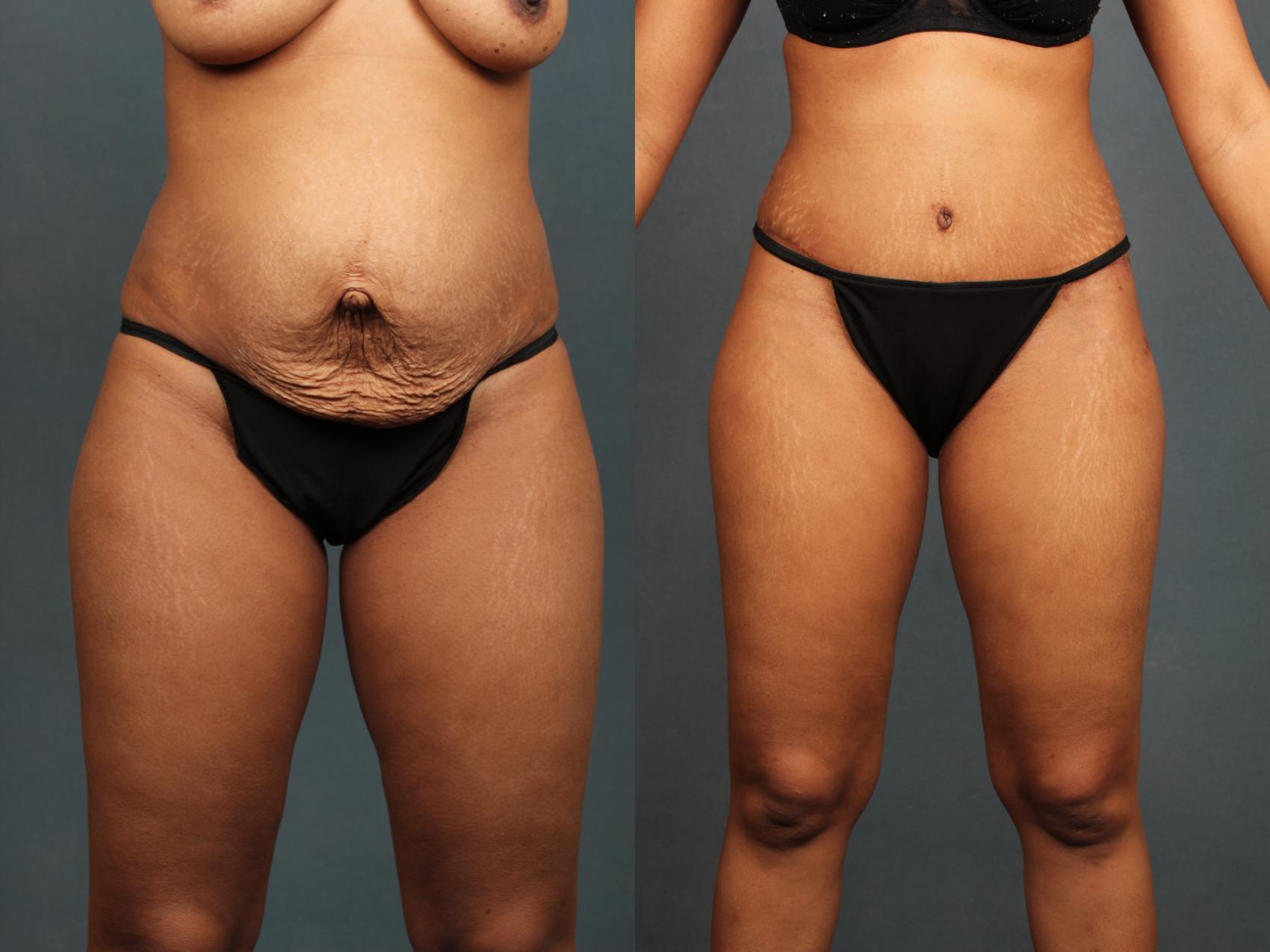
Along with the surprises of motherhood come a number of physical changes. One of the most common is diastasis recti, or separation of the abdominal muscles. This condition is estimated to occur in around 60% of women who have had children, and the effects can vary from mild to severe.
Many of my tummy tuck clients in Louisville, KY, are affected by this condition. If you think you have diastasis recti, or if you know you have it but aren’t sure what to do, here’s what you need to know.
What Is Diastasis Recti?
Diastasis recti is a condition that occurs when the two large abdominal muscles that run vertically down the midline separate, leaving a gap in the stomach that results in a “pooch.” The most common cause of diastasis recti is pregnancy, due to the pressure your growing baby puts on the abdominal muscles.
But diastasis recti can also occur in women—and men—who have not had children. Obesity, weight lifting, rapid weight fluctuations, age, and genetics can all contribute to diastasis recti.
Signs of Diastasis Recti
Diastasis recti can be confirmed by a doctor through a physical evaluation and accurate diagnosis. However, there are certain signs that indicate your abs have parted ways. Some of the most common signs of diastasis recti are:
- A cone or dome shape to the stomach when activating the abdominal muscles
- Abdominal weakness
- Incontinence
- Lower back pain
- A constant belly bulge
Diastasis recti on its own typically isn’t painful. However, it can sometimes cause pelvic floor dysfunction—which results in pain during intercourse, constipation, and painful urination.
Treating Diastasis Recti
There are some things you can do to help improve diastasis recti. Certain exercises, such as those that target the deep abdominal core, can be beneficial. However, other common ab exercises (like crunches or planks) can actually make things worse.
It’s best to consult with a physical therapist who specializes in pelvic floor disorders before starting an exercise program. He or she can perform a thorough evaluation and create a personalized plan for your unique situation. This will help you rebuild a healthy core by establishing pelvic and abdominal strength and stability.
How a Tummy Tuck Helps
While exercises can help improve diastasis recti, sometimes surgical intervention is needed for complete repair. A tummy tuck can restore the abdominal muscles by bringing them back together. This creates a stronger, flatter stomach.
WARNING:
This feature contains nudity. Please click OK to confirm you are at least 18 years of age and are not offended by such material.
At my practice, women who have tummy tuck surgery to repair diastasis recti are very happy with their results. After eating healthy foods and exercising to get their bodies back, yet still being bothered by belly bloat, they are finally able to enjoy the firm stomach they’ve worked so hard for.
No matter how long you’ve had diastasis recti, it can be fixed. Contact us to schedule a consultation and find out whether you are a candidate for tummy tuck surgery. You can also visit our photo gallery to see before-and-after photos from some of our clients.


Would insurance cover this? I have a hernia as well and it is causing a lot of pain.
In many cases, this procedure is covered by insurance. Dr. Calobrace and Dr. Mays do not participate directly with any insurance company.
Hello,
I had my Abdominal Plastery/ Muscle Repair 5 yrs ago.
The question I have is why is the Top part of my Stomach HARD? And it’s a hard bulge.
Is it Scar Tissue and if so how do I get rid of it?
Thank you,
Hello April- Without a proper assessment it is hard to say what is causing that area to be hard. We would recommend setting up a follow up appointment with the surgeon who performed the surgery. If you are not able to, we would suggest setting up a consultation with a board certified plastic surgeon of you choice.
Pingback: Can you gain belly fat after a tummy tuck – Cosmetic Surgery Tips
Hello my name is Priscilla and I have a severe case of diastasis recti and I am trying to find some one who could help me please
Hello Priscilla-
We can certainly assist. Most often patients can correct severe diastasis recti with the common surgical procedure abdominalplasty (tummy tuck). If you would like to explore this option further, please contact us at 502.899.9979 and one of our Surgical Coordinators will be happy to answer all your questions.